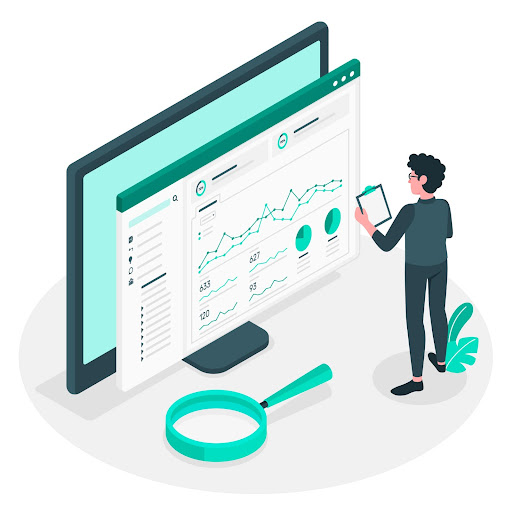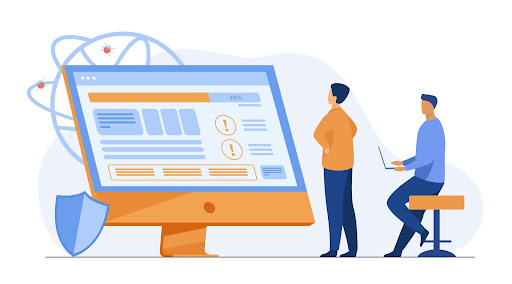The era of privacy is here.
Conventional marketing tactics based on 1st and 3rd-party data have been shaken by new perceptions and additional rules, forcing businesses to embark on a journey to explore ethical and legal alternatives.
Furthermore, when COVID-19 emerged, brands turned their attention to eCommerce, a pattern set to expand, making the urge for comprehensive intelligence on online consumers even more crucial.
With increasing power migrating to customers and rising privacy concerns, eCommerce brands must earn their trust to the extent where they will provide data openly and willingly.
The current approach in focus is Zero-Party Data, which allows online marketers to establish a reliable community network, make emotional bonds, foster a transparent culture, and gain insights from virtual experiences.
In this article, we will look into
- What kinds of data you're already gathering
- How to obtain that information
- How those records might help your eCommerce store
What sort of information does your eCommerce store already gather?

Advertisers seek data, whereas operations teams want clear, non-overlapping records.
However, there is a significant distinction between the data types we collect, which we have overlooked. Identifying the multiple kinds of information you hold is the first move before crafting any marketing strategy.
What is 3rd party data?
Third-party data is information gathered from numerous websites and networks and processed by a third-party data source without direct interaction with your clients.
What is 2nd party data?
Second-party data is information obtained from another business due to an agreement in which you get insight into their first-party data.
What is 1st party data?
First-party data is information generated from your buyers during active connection with your business via networks that you own.
What is 0 party data?
Zero-party data refers to information that visitors and consumers voluntarily disclose to your brand, helping you better understand their interests.
In a fiercely dynamic climate, zero and first-party data can enable you to accomplish what every online marketplace business requires:
- customized service through engaging content
- suitable product suggestions tailored to the shopper's phase in a customer journey, desires, and interests.
Defining Zero-Party Data

You might have a good knowledge of what your consumers have done over the years, but can you anticipate what they will do in the time ahead?
It's perfectly fine for eCommerce marketers to acquire information about people's interests, motives, and objectives when they willingly disclose this data.
That's precisely what Zero-party data is.
Instead of assuming what your customer needs or expects, you can just ask.
If you provide a compelling value exchange, shoppers will reveal their essential personal details, such as intentions and tastes, to maximize customization and help shape a vision of who they are.
Zero-party data helps eCommerce businesses develop meaningful customer relationships and, as a result, better tailor marketing strategies, services, deals, and product suggestions.
There are no mediators and no speculation because the data comes straight and voluntarily from the user.
Why is Zero-Party Data essential?

Zero Data is valuable because it provides a direct line of communication with and broader commentary from customers making it a unique brand resource.
Aside from loyalty programs and other "by request" brand-oriented membership that needs users to sign up, marketers have had an almost limitless opportunity to monitor their clients' online actions electronically, even without their registration.
Companies have basically been compiling consumer profiles with only the client's implicit permission.
Yes, customers must authorize the use of cookies while surfing a site, but most people don't give it much thought before hitting that box.
Following the data trends

As the industry moves away from conventional profiling approaches, there is intense pressure to gather Zero-Party Data.
eCommerce marketers' authority to track customer surfing and buying behavior is restricted.
A few of the modifications are already in effect, while others are expected to be implemented by the end of 2023.
Apple customer data updates
For example, Apple altered its acceptance policies for the usage of IDFA, requiring Apple smartphone users to approve monitoring on a per-app basis.
Google customer data updates
Google declared in early 2020 that it would remove third-party cookies from Chrome by 2022, a deadline that has now been pushed to the end of 2023.
People have become increasingly cautious and skeptical of brands stealing their data, monetizing it, and giving it to the winning bidder.
This has resulted in the change that we've all experienced in our mailboxes and on our smartphones - data privacy laws have sprung up all over the world.
How to collect Zero-Party Data for your eCommerce store

There are various ways to gain access to your consumers' vital zero-party data. But have in mind two key points:
- Permission is necessary for gathering zero-party data
- You should clearly state what will happen to obtain information
Note that the need for personalization is the primary motivation for customers to provide their data willingly.
Explain how the material you acquire is used to better understand your clients' needs. Illustrate how you'll use this information to improve their experience.
For collecting zero-party data, consider one or more of the following methods:
- Polling on social networks
- Surveys and games that are interactive
- In-store loyalty schemes
- Priority centers in the new user recruiting process
- Discount or filter notifications triggered by on-site or app inquiries
- Interactions with customer service representatives
- Surveys conducted via mail, chat apps, or other methods of communication
Even if customers provide these details willingly and knowingly, there's no guarantee they're entirely accurate.
Finally, when gathering zero-party data, avoid asking your clients as much information as you might feel the need to.
Minimizing the quantity of zero-party data you demand makes it easier for people to provide you with what you require.
Collecting more precise and high-quality data

Gathering data straight from your shoppers allows you to maintain your database neat and up to speed.
You can collect essential information through engaging experiences, resulting in more precise info about your consumers and prospects, which allows you to design a customized service.
Allow your customer data to be updated
Another thing you can do to maintain the relevance of your data is to allow changes.
Priorities change over the years.
Motivations and finances vary throughout time.
What people seek and expect changes due to all of these adjustments.
Allowing customers to modify the zero-party data they exchange with you is critical.
A customer may enjoy your emails and wish to get more of them in the future.
Perhaps they've recently found a new job, and their learning priorities and what they want to see online have changed.
Maybe they've spotted a new attractive brand and would like to hear more from them.
Make it easy to change preferences on your site
If an organization has an innovative zero-party data approach, it will allow people to revise their ZPD selection.
This is usually done through a preference center linked to their account with your company.
The psychology of value exchange

Consumers will not give up their private information for free.
You must provide a concrete value exchange - that is, you must provide something of worth in return for the data you require.
To harvest the fruit of on-point personalization, you must captivate, motivate and give people something in exchange for the time and effort they've invested in providing you with data you've requested.
Advertisers can create interactive content that carries out research, collect opt-ins, and provide a better overall experience for customers.
You can use vouchers, quiz scores, and other forms of incentives.
What can you do if you don't want to compromise your brand with discounts?
Take into account the different methods you can implement to advertise your brand.
Consider providing contextually diversified experiences in which a customer receives a beneficial incentive for taking particular activities.
You can accomplish this by offering priority access to a product or entry to exclusive content.
You could also provide benefits in the manner of more focused, personalized advertising relying on their past purchasing habits and expected choices.
Hence, their newsfeed reflects what they genuinely want to see.
After you've acquired consumers' perceptions, plans, likes, and choices, you can create a fully tailored customer experience to avoid the cookie's inevitable collapse.
Transparency is a great way to build trust

The foundations of a long-lasting partnership are sincerity and transparency.
It's reasonable for clients to request this if you expect them to keep coming back. Being open and honest with consumers is the initial move toward gaining their trust and, as a result, their loyalty.
As reported by Forbes, about 90% of buyers feel a brand's openness is crucial when making their purchasing decisions, and 94% of all buyers are more inclined to be committed to the brand when it vows to full transparency.
Your responsiveness, accessibility, and flexibility can all be used to demonstrate transparency.
Transparency also includes being prepared to accept and learn from your mistakes.
Moreover, don't forget to notify customers about how you plan to handle and secure the data they provide.
Wrapping up
Companies should turn to Zero Party Data as part of an unavoidable destiny.
Revolution has already begun, and if you do not act quickly, you're in danger of being left behind the internet marketing game.
Furthermore, it appears that our buyers are gifting us with an excellent possibility to unleash an eCommerce brand's potential to assist them properly.
All it takes is to raise different questions and respond to them in unique ways.
Concentrating on Zero Party Data is a once-in-a-lifetime chance to send your brand to another level.
Guest Post Author - Mitko Ivandjikov
Mitko Ivandjikov is a professional outreach specialist at Intercoolstudio, working with the team to increase their visibility and grow their customer base.
He's also an avid sports fan who spends his free time watching, reading about, or playing basketball.
You can connect with him on LinkedIn.









